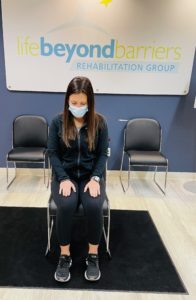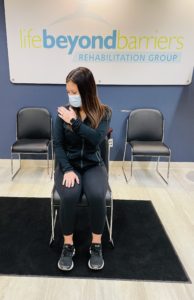November is Bladder Health Month! Here are some bladder health facts for you, as well as an explanation of the common misconceptions that come up.
Bladder Health Facts
The general recommendation for water consumption is drink ½ of your body weight (convert pounds to ounces) in water per day. For example, if you weigh 150 pounds, you should drink approximately 75 ounces of water per day
Tip: Carry a water bottle with you everywhere you go – know how many ounces a full bottle carries so you can figure out how much you drank in a day
Most people empty their bladder approximately 5-8 times in 24 hours. Some of the most common bladder irritants include coffee, tea, carbonated beverages, citrus juices, and many fruits. This does not mean you have to avoid them altogether, just be conscious of the effect on your bladder
Caution: These are general facts about bladder health, but may vary from person to person. This should be discussed with your physician prior to making any changes to your bladder management!
Neurogenic bladder is common following a neurological diagnosis such as Spinal Cord Injury, Traumatic Brain Injury, Stroke, Parkinson’s Disease, and Multiple Sclerosis. Neurogenic bladder results from the inability of the brain to send/receive messages to and from the bladder often resulting in incontinent episodes. This function can often be treated through re-education of the pelvic floor!
Bladder Myths
It is normal to leak urine as you age or after you have had children
False! Leaking urine is not normal. It may indicate issues with your pelvic floor or an underlying medical concern- talk to your physician if you leak urine
It is normal to get up a couple of times per night to empty your bladder
False! Nocturia (getting up at night to empty your bladder) is not typical. Your body needs that time to ‘rest and digest’ and getting up to use the bathroom disrupts your bodies natural rhythms. Getting up at night to use the bathroom also increases risks for falling, especially in the elderly population
Kegels are the only way to fix issues with incontinence
False! There are many factors that go into someone experiencing incontinence. It could be due to muscle imbalances, neurological deficits, weakened musculature, pain or behavioral factors. The best way to figure out a plan is to speak with your physician and be evaluated by a pelvic floor therapist
Pelvic floor therapy is just for the female anatomy
False! The male anatomy can also experience pelvic floor dysfunction which can lead to incontinence, pain, sexual dysfunction and can benefit from pelvic floor therapy. Pelvic floor therapy can even be considered post prostate surgery.
While bladder health is often overlooked, it is an important aspect of your overall health and wellness. Reach out to your primary care provider/urologist/therapist about bladder concerns, and ask to be evaluated by a pelvic floor therapist!
~Amanda Brennan, OTRL






